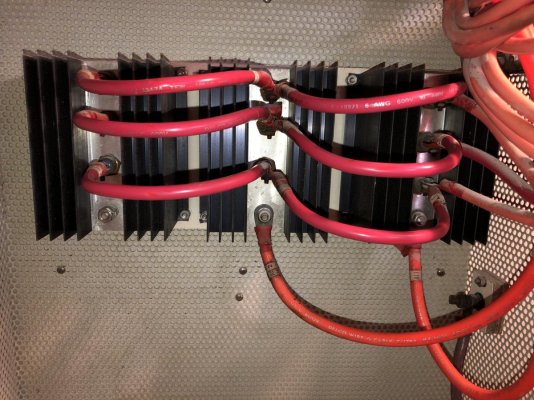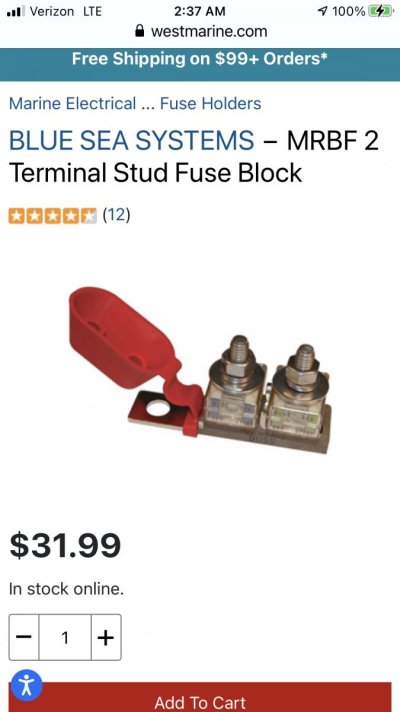Hi, I have a Gulfstar44 and I’m in the process of updating my charger. I’m not sure what my old charger and the two alternators were feeding into as shown in the photo. The original charger and the two alternators feed into the bottom. There are three feeds out the top that go to circuit breakers and then to the engine bank, genset battery, and house bank.
It seems as if it takes all power sources and splits them up among the three battery banks but I’m not sure.
I’m putting in a Sterling smart charger that monitors the banks and sends each bank what it needs so I don’t think I want to run the charger thru this 1985 splitter?
If I hook my charger up to the batteries directly as shown in the instructions should I leave the alternators hooked up to this old splitter or is there a better way?
It seems as if it takes all power sources and splits them up among the three battery banks but I’m not sure.
I’m putting in a Sterling smart charger that monitors the banks and sends each bank what it needs so I don’t think I want to run the charger thru this 1985 splitter?
If I hook my charger up to the batteries directly as shown in the instructions should I leave the alternators hooked up to this old splitter or is there a better way?


